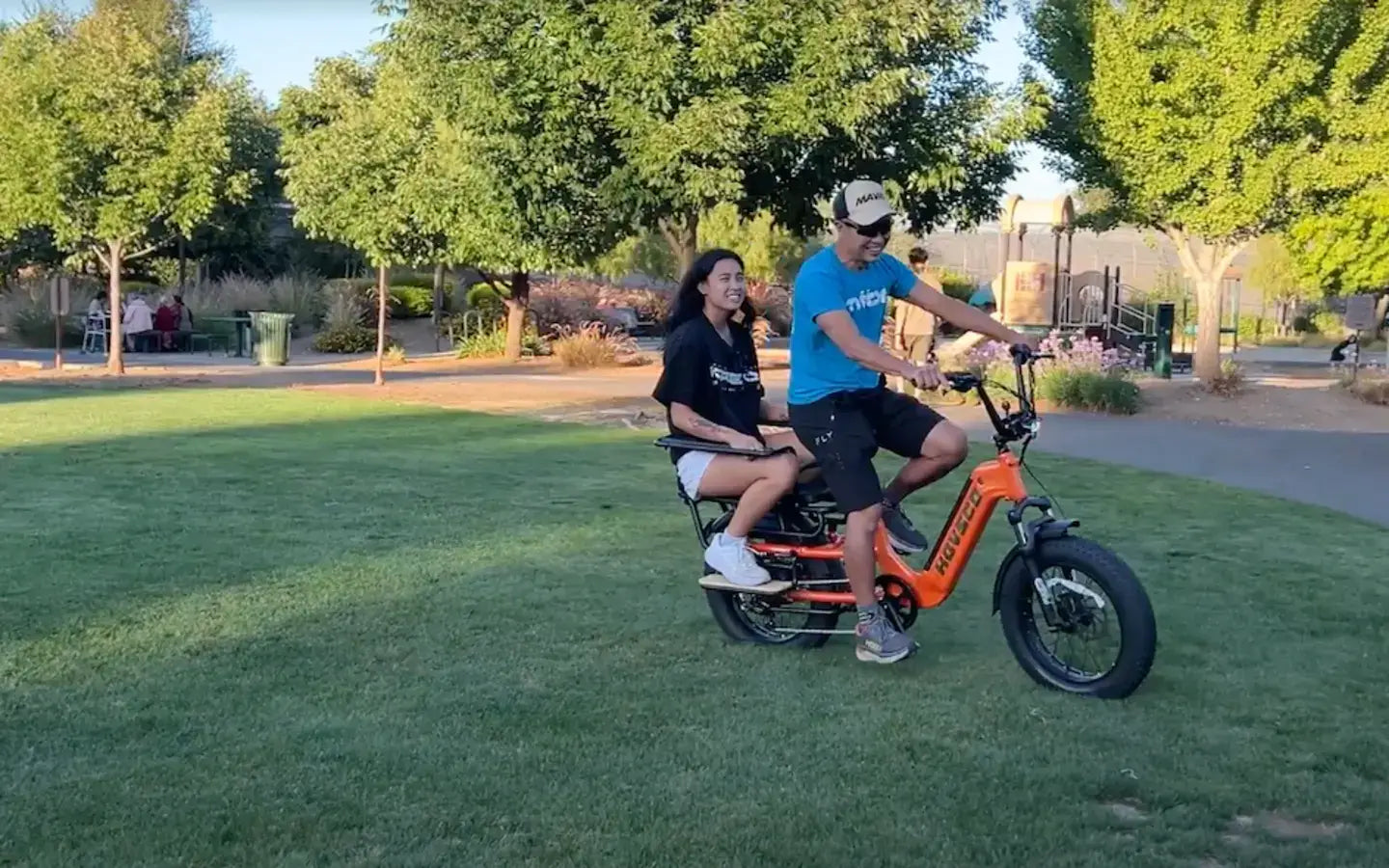
- by HOVSCO USA
What Are the 6 Common Misconceptions About Ebikes?
- by HOVSCO USA
6 common misconceptions about ebikes include: ebikes are only for lazy people, ebikes are cheating, ebikes are too fast and dangerous, ebikes are too expensive, ebikes can’t be ridden in the rain, and ebikes require complex maintenance. Understanding these 6 common misconceptions about ebikes helps riders make informed choices and appreciate the true benefits of modern electric bikes.
The belief that ebikes are only for lazy people is one of the 6 common misconceptions about ebikes. In reality, ebikes encourage more people to ride, offering pedal-assist options that still require effort. Studies show ebike riders often cycle longer and more frequently than traditional cyclists, boosting both physical activity and overall health.
Chart: Physical Activity Comparison
| Rider Type | Average Weekly Miles | Frequency of Rides |
|---|---|---|
| Ebike Riders | 25–40 | 4–5 times/week |
| Traditional Bike | 15–25 | 2–3 times/week |
Among the 6 common misconceptions about ebikes, the notion that ebikes are cheating is persistent but unfounded. Ebikes provide pedal-assist, not full automation. Riders can adjust the level of assistance, making it possible to get as much exercise as desired. Ebikes open cycling to people of all fitness levels and abilities, making the activity more inclusive.
It’s a misconception to believe ebikes are too fast and dangerous. Most ebikes, including those from HOVSCO, are regulated to assist only up to 20–28 mph, depending on the class. This is comparable to speeds achieved by fit cyclists on traditional bikes. Safety features like responsive brakes and stable frames further enhance ebike safety.
Chart: Ebike Speed Regulations
| Ebike Class | Max Assisted Speed | Typical Use Case |
|---|---|---|
| Class 1 | 20 mph | Urban/commuting |
| Class 2 | 20 mph | Urban/commuting |
| Class 3 | 28 mph | Faster commuting |
The idea that ebikes are too expensive is one of the 6 common misconceptions about ebikes. While the upfront cost may be higher than a traditional bike, ebikes are far less expensive than cars when considering fuel, insurance, and maintenance. Many cities offer incentives, and the long-term savings make ebikes a smart investment for daily transportation.
A persistent misconception is that ebikes can’t be ridden in the rain. In reality, most modern ebikes, including HOVSCO models, are built with water-resistant components and sealed electronics. While it’s wise to avoid deep puddles and submersion, normal rain and wet roads pose no problem for quality ebikes. Proper maintenance ensures reliability in all weather.
The belief that ebikes require complex maintenance is another of the 6 common misconceptions about ebikes. About 90% of ebike parts are the same as those on traditional bikes. Routine tasks like cleaning, lubricating, and adjusting brakes are straightforward. Most local bike shops can handle ebike maintenance, and HOVSCO provides guides for DIY care.
When purchasing an ebike, look beyond the 6 common misconceptions about ebikes. Focus on reputable brands like HOVSCO, which offer water-resistant designs, reliable batteries, and easy maintenance. Consider your riding needs-commuting, recreation, or cargo-and select a model with the right range and features. Invest in quality accessories, including locks, lights, and weather-appropriate gear, to maximize your ebike experience.
“At HOVSCO, we see the 6 common misconceptions about ebikes as opportunities to educate and empower riders. Ebikes are not just for the lazy or unfit-they’re a gateway to healthier, greener, and more connected communities. Our mission is to innovate and make ebikes accessible, reliable, and enjoyable for everyone, everywhere.”
Are ebikes only for people who don’t want to exercise?
No, ebikes encourage more frequent and longer rides, providing real exercise through pedal-assist technology.
Is riding an ebike considered cheating?
Ebikes offer adjustable assistance, allowing riders to choose their workout intensity. It’s not cheating-it’s smart cycling.
Are ebikes too fast and unsafe?
Most ebikes are regulated to safe speeds and include robust safety features, making them as safe as traditional bikes.
Are ebikes really too expensive for most people?
While the initial cost may be higher than a regular bike, ebikes are much cheaper than cars and offer long-term savings.
Can I ride my ebike in the rain?
Yes, most ebikes are designed to handle rain and wet roads, thanks to water-resistant components and sealed electronics.
Do ebikes require special or complex maintenance?
No, most ebike maintenance is similar to that of regular bikes, and many local shops can provide service and repairs.
Share:
How Fast Are Electric Bikes? Understanding E-Bike Speed Limits and Performance
What Are the 9 Benefits of Electric Bikes for Modern Riders?